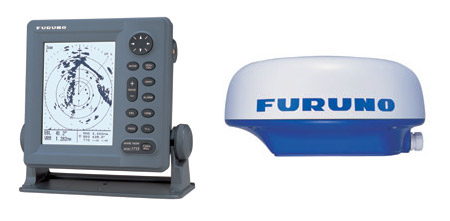Looking radars over, the prices vary from $1,000 to $10,000+, new. Used, an old one can be had for $400-$500.
Debating new and used is often tricky, especially with electronics. When electronics die, they die suddenly and the odds of death go up with age. Another issue with buying a used older radar is that power consumption efficiency of electroncis improve with time. That is, a piece of electronics from the 80s or 90s tends to consume more power, for the same capability, than one made in the 2000s. Given our push to minimize electrical drain, this would also push us towards a newer radar.
So how much do we spend?
Like all gadgets, you get more whizbang for the money .... but how much whizbang do we need?
Given that we are considering not having any radar whatsoever, any radar capability (the identification of an object) is the minimum entry criteria. Another nice feature for us would be the capability of a "watchman" mode. That is, a mode that lets us tell the device to periodically turn on, check the surrounding area, and then beep if there is something we should look at. This would not replace the best practice of getting up every few hours to check the lines and look around, but it would be a nice safety feature to have. Further, running in watchman mode reduces the amount of juice consumption of the radar system itself when compared to a continuous operation mode. These are the 2 minimum features. Color display isn't required, nor is object tracking.
Another area of consideration is range. Again, the extreme case is not having a radar, so any distance is better than nothing. The distances for the units start around 20 nautical miles! That is a long way. The further they see, the more power they will have to consume.
With all this taken into consideration, a lower end unit in terms of capability will do. Something like the Furuno 1715 LCD Radar (pictured here). This unit combo we can acquire for $1600.

Another unit that is worthy of considertation, and doesn't cost much more is the Raymarine C-70, Classic (pictured below). This unit goes from LCD to Color, but still only consumes about 0.75 Amps / Hr. Other neat features can be added on, if we find we need them, so expandability becomes a feature maybe we should consider. We can get the Raymarine unit plus Radar dome for about $1800.

Going with a lower end units, like these, has another interesting advantage. If the unit becomes disabled, the replacement cost is lower and we won't have become overly reliant on all the other "features."
Ahh, decisions decisions. We will post to let you know what we end up choosing.




No comments:
Post a Comment
Note: Only a member of this blog may post a comment.